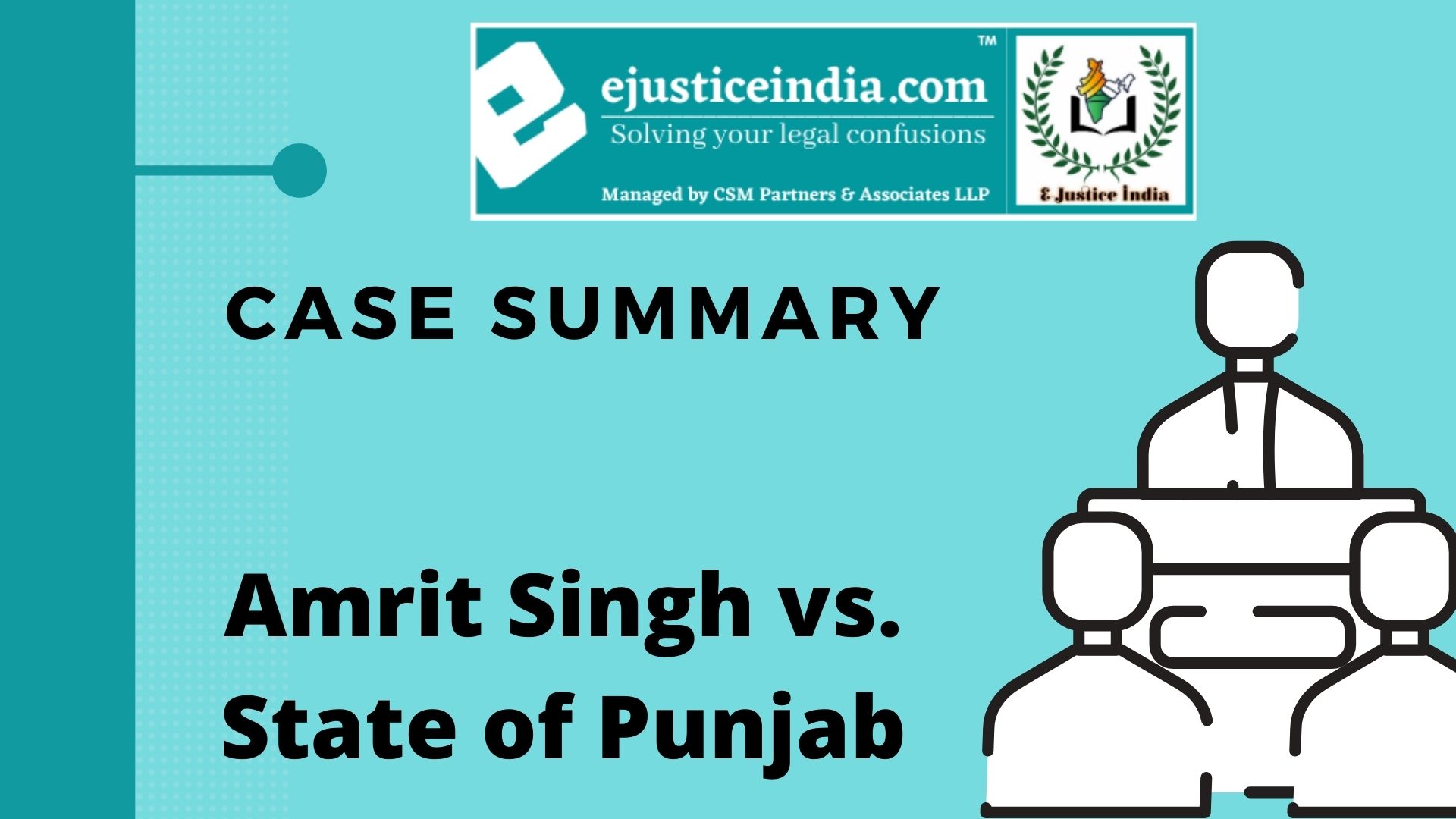Rishideo Pandey vs State of Uttar Pradesh
Case Name : Rishideo Pandey vs State of Uttar Pradesh
Author : Anusha C Gudagur
CITATION:
AIR 1955 SC 331
BENCH:
Justice S. Das, Justice Bhagavati, Justice J Imam
INTRODUCTION:
The present case of Rishi Deo Pandey vs State of UP is related to the common intention as provided under Indian Penal Code, 1860. Section 34 of the IPC deals with common intention and according to this provision, when a number of persons engaged in a criminal act with a common intention, each person is made liable as if he himself has done the act.
Section 149 deals with common object and as per this Section, every member of an unlawful assembly is held liable as for any criminal act done in furtherance of a common object. Usually, it is observed that the common object might develop on spot but a common intention cannot.
But in certain circumstances common intention may also develop suddenly on spot and such common intention depends upon the facts and circumstances of the case and also on the conduct of the accused. And the case of Rishideo Pandey vs State of UP stands as a landmark judgement, as the Court for the first time held that the “common intention may develop on the spot also”.
FACTS:
The appellant and his brother Ram Lochan Pandey were seen (by the eye witnesses) standing near the cot of the victim, who was sleeping. One of them was armed with a ‘gandasa’ and another with a ‘lathi’. And another Banslochan was standing near the door guarding. Ram Lochan who was standing near the cot was just lifting up the ‘gandasa’ after having given a fatal blow on the neck of Sheomurat, the victim. While the appellant was standing at the foot of the cot armed with his lathi.
When a hue and cry was raised, the two brothers ran together, and both of them were seen running from the bedroom of the victim. The victim died of an incised wound on the neck, which according to the medical evidence was necessarily fatal and also there was no sign of any lathi blow on the victim. Later, both the appellant and Ram Lochan absconded and then surrendered before the Magistrate after proceedings under Ss. 87 and 88 of Cr. PC were taken against them.
The appellant (Rishideo) and his brother along with Banslochan were convicted by the Sessions Judge under Section 302 read with Section 34 (common intention) of the Indian Penal Code for murdering Sheomurat and each of them were sentenced to death subject to confirmation by the High Court. All the three accused appealed to the High Court and there was a reference made by the learned Sessions Judge for confirmation of the death sentence. The High Court rejected the appeal as it concerned Ramlochan and Banslochan, who accepted the sentence, passed on them. Therefore, the present appeal was by Rishideo only.
ISSUES AND FACTS OF LAW:
- What is the offence committed by the three accused?
- Whether the two accused who were present along with Ram Lochan, are also liable for committing murder.
- Whether the accused persons had the common intention to murder the deceased.
JUDGEMENT:
- Though the actual blow was given by Ram Lochan alone which caused the death of Sheomurat, yet the presence of all the three accused infers that they had the premeditated intention to kill the deceased and his death was caused in furtherance of the said common intention.
- The very fact that Ram Lochan was armed shows that the other two accused had not only known but also had shared his intention to kill the deceased.
- Therefore, the fact that the fatal blow was given only by Ram Lochan was immaterial and all the three accused were responsible for the death caused under Section 34 of IPC.
- The Court dismissed the appeal as there was no misapplication of Section 34. Taking the facts and circumstances of the case into consideration, murder was caused in furtherance of common intention which was developed on the spot.


